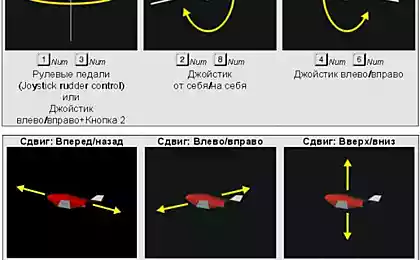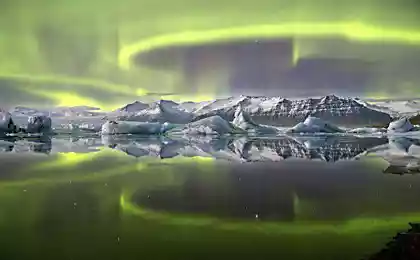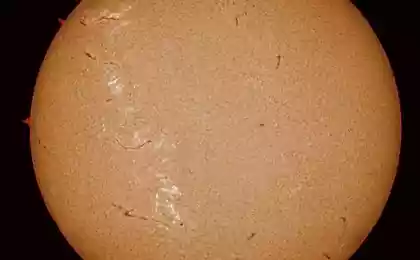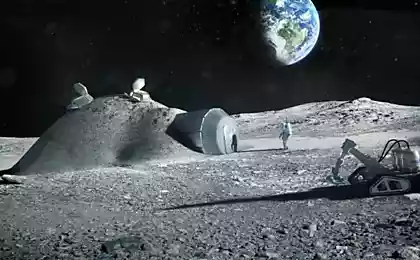774
Seven wonders of the Moon
To see the amazing phenomenon, no need to go to other planets, we can just look at the moon Zemli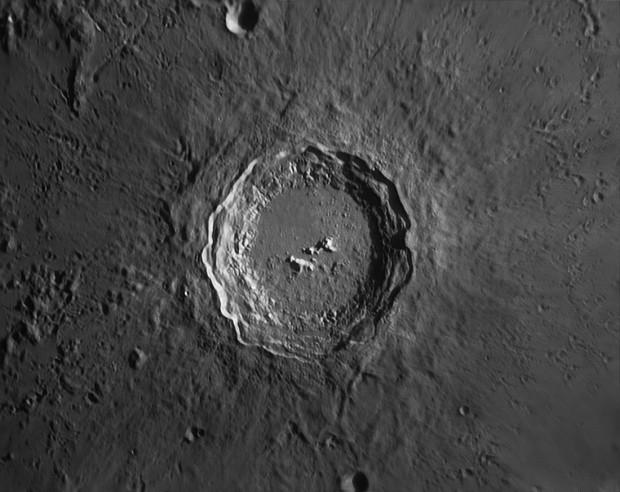
Since the moon and next to it is relatively easy to reach, it is likely to become the first stop for future space tourists. Well, on the moon many natural wonders, which no one on earth, nor on other planets of the solar system.
1. Crater Piri

On the Moon, there is a small crater called Peary, and it is located directly on the North Pole. So it is quite logical that it was named in honor of Robert Peary Arctic explorer who first reached the North Pole on Earth. Since the Sun at this point of the lunar surface never rises high above the horizon, the crater floor is always immersed in darkness. However, the sun never sets some peaks at the edges of the crater. So although the crater and the landscape around it can be immersed in darkness, those high peaks always dazzling sparkle. Poetic-minded astronomers even call these peaks "mountains of eternal light", and this is probably one of the most romantic names for objects in the solar system.
2. Crater Kopernika

Visible even from Earth, crater Copernicus - is one of the most beautiful lunar attractions. If you look at it from the earth, it is not too far from the center of the moon. Its diameter is about 60 km away, so it can be nice to see even through binoculars. This is a bright crater, surrounded by a white halo in the midst of the dark lunar plains. In size it is comparable to Yellowstone Park on Earth. The edges of the crater half a kilometer rise above the surrounding plain. If you stand there, you can see the inner slopes of the crater, which go down to a depth of almost 2, 5 km. Unlike most other large lunar craters, Copernicus crater was filled with lava, so it looks like the bottom of a cup, and at its center stands a cluster of peaks, with three of them are higher than 1, 3 km.
3. Mount Piko
Pico - a single pyramid-shaped mountain that rises to 1, 6 km above the flat surrounding landscape. It is part of the ring of mountains that completely surrounds the giant crater. However, unlike the crater Copernicus, this crater was flooded with lava, which resulted in a huge flat and round the plain, known today as the Sea of Rains. Most of the ancient mountains were buried under layers of lava at the top were only a few peaks, like islands in a sea of stone.
4. Great Alpine dolina
Great Alpine valley on the moon divides into two huge mountain range. The length of the valley more than 100 km, width - more than 7 km. Alpine Valley arose when the moon's surface was covered with tectonic faults. The opposite sides of a fault "dispersed" in hand, and the valley between them arose. The bottom of the valley once upon a time it was flooded by lava that poured from a huge wound in the lunar crust. Passing through the center of the valley tortuous narrow channel called Reilly, it was originally a lava tube (it is a sort of a tunnel through which the molten rock rushes to the surface). Then the tube is collapsed, and there was channel.
5. Direct stena
Direct wall - a huge moon rock, or more precisely, the ledge. Its official name sounds like Rupes Recta, from the Latin "straight rock." As Pico Mountain, straight wall is surrounded by a large, flat plain, and it is easy to see through a small telescope. Wall and in fact almost perfectly straight (because it is sometimes called the "Railway") and its length of almost 75 km. Wall came when a huge block of the lunar crust was pushed through a long tectonic fault. Direct wall height varies in the range from 200 to 500 m. For comparison: the height of the Great Wall is only 30 m.

6. Pool South Pole Eytken
Pool South Pole-Aitken - a huge crater on the Moon. Its diameter is 2500 km depth is 8 km away, and it is considered one of the biggest craters of the solar system. It arose as a result of a collision with an asteroid millions of years ago. If this crater was in the world, he would have stretched from New York to Kansas City. Unfortunately for our tourists lunar crater is too large to be able to assess it from the surface. To see all of it is possible only from orbit.
7. Natural most
Natural Bridge - is one of the biggest and freshest surprises found by astronomers in the lunar landscape. The fact that most of the natural bridge in the world - is the result of wind and water erosion. That's just on the moon no one nor the other. Moon Natural Bridge arose when lava tubes collapsed in two places, leaving in the middle of an untouched portion of a width exceeding 60 m. Later was found near the second bridge, smaller.
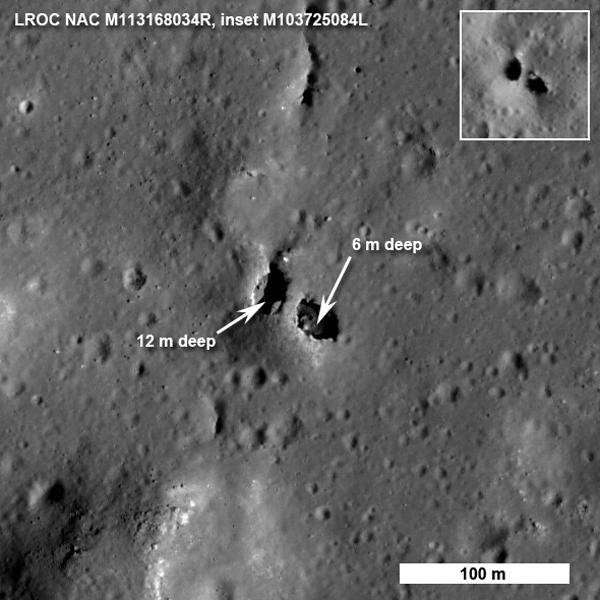
via factroom.ru

Since the moon and next to it is relatively easy to reach, it is likely to become the first stop for future space tourists. Well, on the moon many natural wonders, which no one on earth, nor on other planets of the solar system.
1. Crater Piri


On the Moon, there is a small crater called Peary, and it is located directly on the North Pole. So it is quite logical that it was named in honor of Robert Peary Arctic explorer who first reached the North Pole on Earth. Since the Sun at this point of the lunar surface never rises high above the horizon, the crater floor is always immersed in darkness. However, the sun never sets some peaks at the edges of the crater. So although the crater and the landscape around it can be immersed in darkness, those high peaks always dazzling sparkle. Poetic-minded astronomers even call these peaks "mountains of eternal light", and this is probably one of the most romantic names for objects in the solar system.
2. Crater Kopernika


Visible even from Earth, crater Copernicus - is one of the most beautiful lunar attractions. If you look at it from the earth, it is not too far from the center of the moon. Its diameter is about 60 km away, so it can be nice to see even through binoculars. This is a bright crater, surrounded by a white halo in the midst of the dark lunar plains. In size it is comparable to Yellowstone Park on Earth. The edges of the crater half a kilometer rise above the surrounding plain. If you stand there, you can see the inner slopes of the crater, which go down to a depth of almost 2, 5 km. Unlike most other large lunar craters, Copernicus crater was filled with lava, so it looks like the bottom of a cup, and at its center stands a cluster of peaks, with three of them are higher than 1, 3 km.
3. Mount Piko

Pico - a single pyramid-shaped mountain that rises to 1, 6 km above the flat surrounding landscape. It is part of the ring of mountains that completely surrounds the giant crater. However, unlike the crater Copernicus, this crater was flooded with lava, which resulted in a huge flat and round the plain, known today as the Sea of Rains. Most of the ancient mountains were buried under layers of lava at the top were only a few peaks, like islands in a sea of stone.
4. Great Alpine dolina

Great Alpine valley on the moon divides into two huge mountain range. The length of the valley more than 100 km, width - more than 7 km. Alpine Valley arose when the moon's surface was covered with tectonic faults. The opposite sides of a fault "dispersed" in hand, and the valley between them arose. The bottom of the valley once upon a time it was flooded by lava that poured from a huge wound in the lunar crust. Passing through the center of the valley tortuous narrow channel called Reilly, it was originally a lava tube (it is a sort of a tunnel through which the molten rock rushes to the surface). Then the tube is collapsed, and there was channel.
5. Direct stena

Direct wall - a huge moon rock, or more precisely, the ledge. Its official name sounds like Rupes Recta, from the Latin "straight rock." As Pico Mountain, straight wall is surrounded by a large, flat plain, and it is easy to see through a small telescope. Wall and in fact almost perfectly straight (because it is sometimes called the "Railway") and its length of almost 75 km. Wall came when a huge block of the lunar crust was pushed through a long tectonic fault. Direct wall height varies in the range from 200 to 500 m. For comparison: the height of the Great Wall is only 30 m.

6. Pool South Pole Eytken

Pool South Pole-Aitken - a huge crater on the Moon. Its diameter is 2500 km depth is 8 km away, and it is considered one of the biggest craters of the solar system. It arose as a result of a collision with an asteroid millions of years ago. If this crater was in the world, he would have stretched from New York to Kansas City. Unfortunately for our tourists lunar crater is too large to be able to assess it from the surface. To see all of it is possible only from orbit.
7. Natural most

Natural Bridge - is one of the biggest and freshest surprises found by astronomers in the lunar landscape. The fact that most of the natural bridge in the world - is the result of wind and water erosion. That's just on the moon no one nor the other. Moon Natural Bridge arose when lava tubes collapsed in two places, leaving in the middle of an untouched portion of a width exceeding 60 m. Later was found near the second bridge, smaller.

via factroom.ru
The musician, inspired by mushrooms
The artist Concetta Antico see 100 times more colors than the average person













